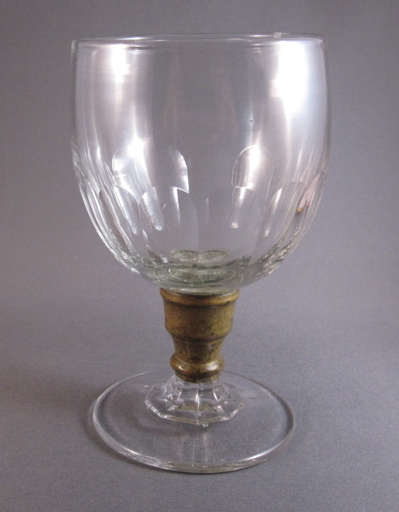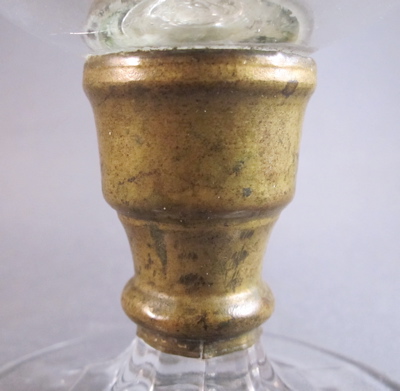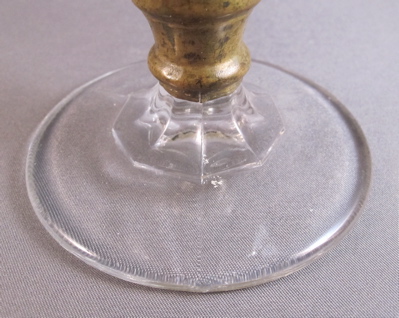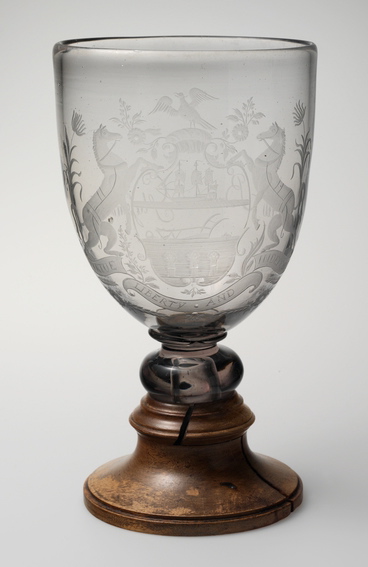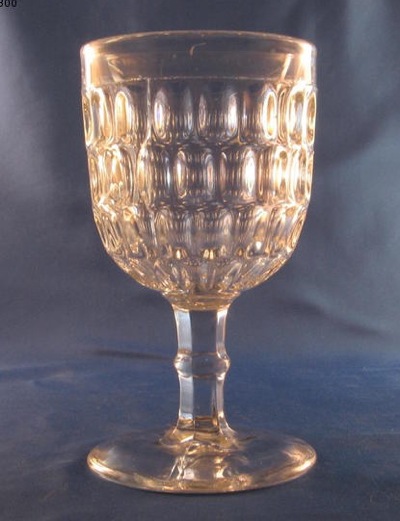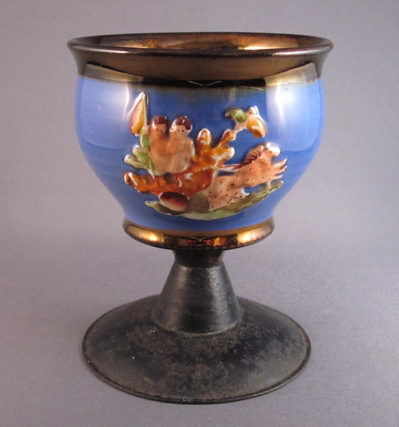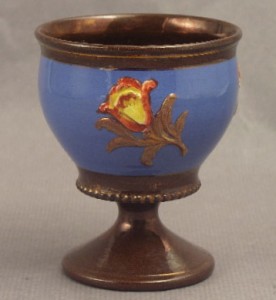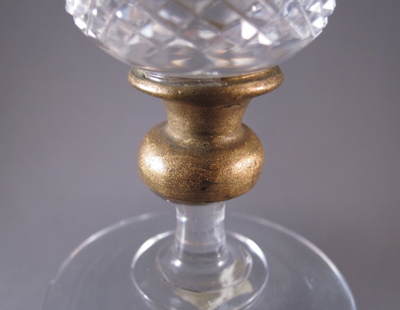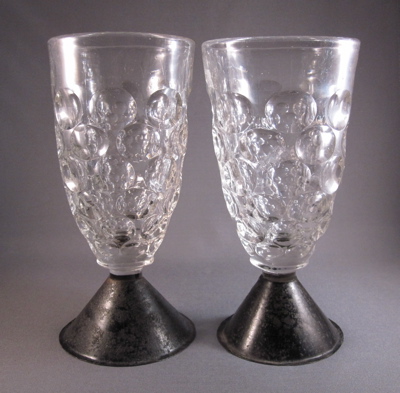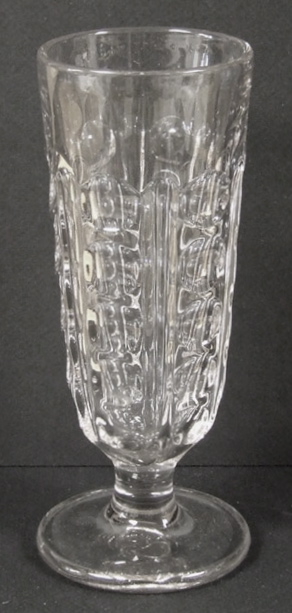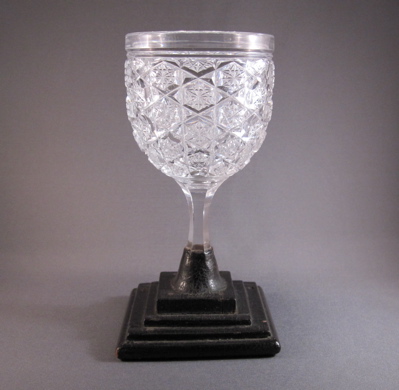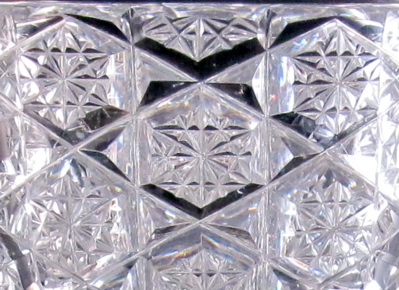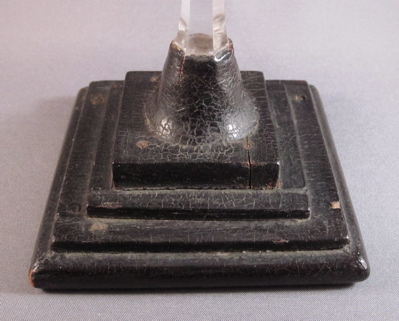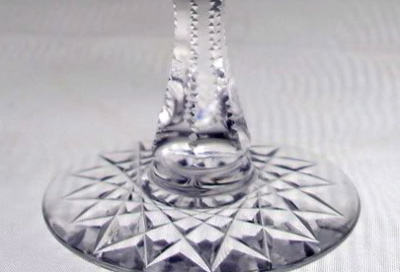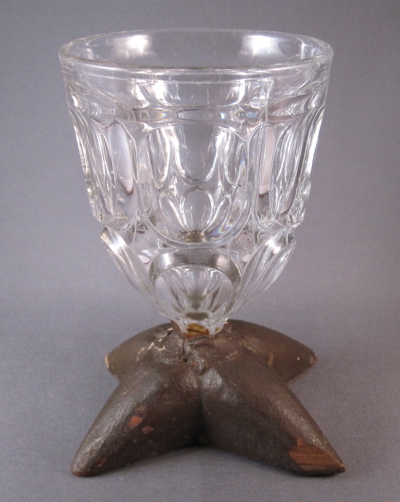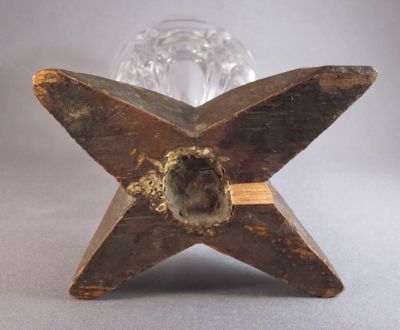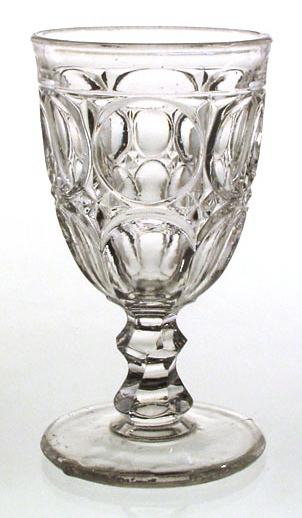This seemingly simple American-made glass goblet is actually a uniquely crafted example of thrift and imagination. It utilizes the reuse of three different broken items: two seperate glass goblets and an oil lamp. The top portion bowl is made of blown glass and has a hand cut “thumbprint” pattern decoration.
The bowl and base are held together with a brass lamp ferrule (the collar that attaches a burner to a lamp base). Goblet measures 6″ high and has a diameter of 3-3/8″.
The three-mold pressed glass replacement base was salvaged from another goblet, making this a tripartite repair job!
